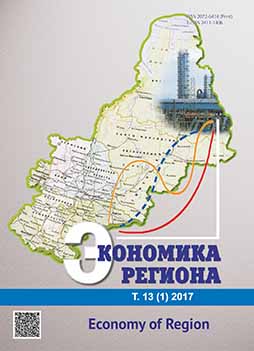Применение доильной робототехники в регионе.
Robotic Milking Implementation in the Sverdlovsk Region
Author(s): Egor Artyomovich Skvortcov, Ekaterina Gennadyevna Skvortcova, Vladimir Innokentyevich Nabokov, Pavel Sergeevich KrivonogovSubject(s): Economy, Geography, Regional studies
Published by: Институт экономики Уральского отделения Российской академии наук
Keywords: milking robots; agricultural robots; automatic milking; efficiency of the use of robot technology; labour efficiency; labour intensity; returns on assets; rate of profit; net cost; human resource risk
Summary/Abstract: The research topic is relevant due to a high rate of the implementation of milking robots (automatic milking system, AMS) in Western Europe and in the Middle Urals. As of January 1, 2016, 21 milking robot systems of six different brands of foreign production were installed in the region. Milking robotics is used in small, medium and large enterprises (by the number of personnel), in contrast to Western Europe, where it is mainly used on the farms of family type. The article examines the socioeconomic causes of the introduction of robotics, as well as the impact of the use of robots to the economic indicators of milk production. The expert survey has revealed as the main reasons for the introduction of robotics, a desire to reduce the risks of personnel (45.5 %) and a shortage of staff (18.2 %). The analysis of the utilization efficiency of fixed assets in all organizations introduced robots has shown both a decrease of capital productivity after the introduction of milking robots for 15–60 % or more, and the reduce of the profit rate in 9 out of 11 of the analysed organizations because of the high capital intensity of robotics projects. The analysis of labour indicators and the net cost of milk is carried out in 45.5 % of organizations, where we have obtained the consistent results of the use of robotics. The authors have analysed the direct costs for the production of 1 quintal of milk. In a group of 5 companies, on a robotic farm, it is 5.1 % lower than in a conventional farm. The complexity of the production of milk on a robotic farm is lower by 48.7 %, and labour productivity per person is higher on 95.3 % than on conventional farms. The results of the study can be used as the recommendations for agricultural organizations to use robotics milking to reduce the deficit of staff and to minimize the impact of personnel risks on production results. The growth of the importance of the reasons for the introduction of milking robots and a high capital intensity of import robotics can justify the need for a national milking robotics.
Journal: Экономика региона
- Issue Year: 13/2017
- Issue No: 1
- Page Range: 249-260
- Page Count: 12
- Language: Russian

